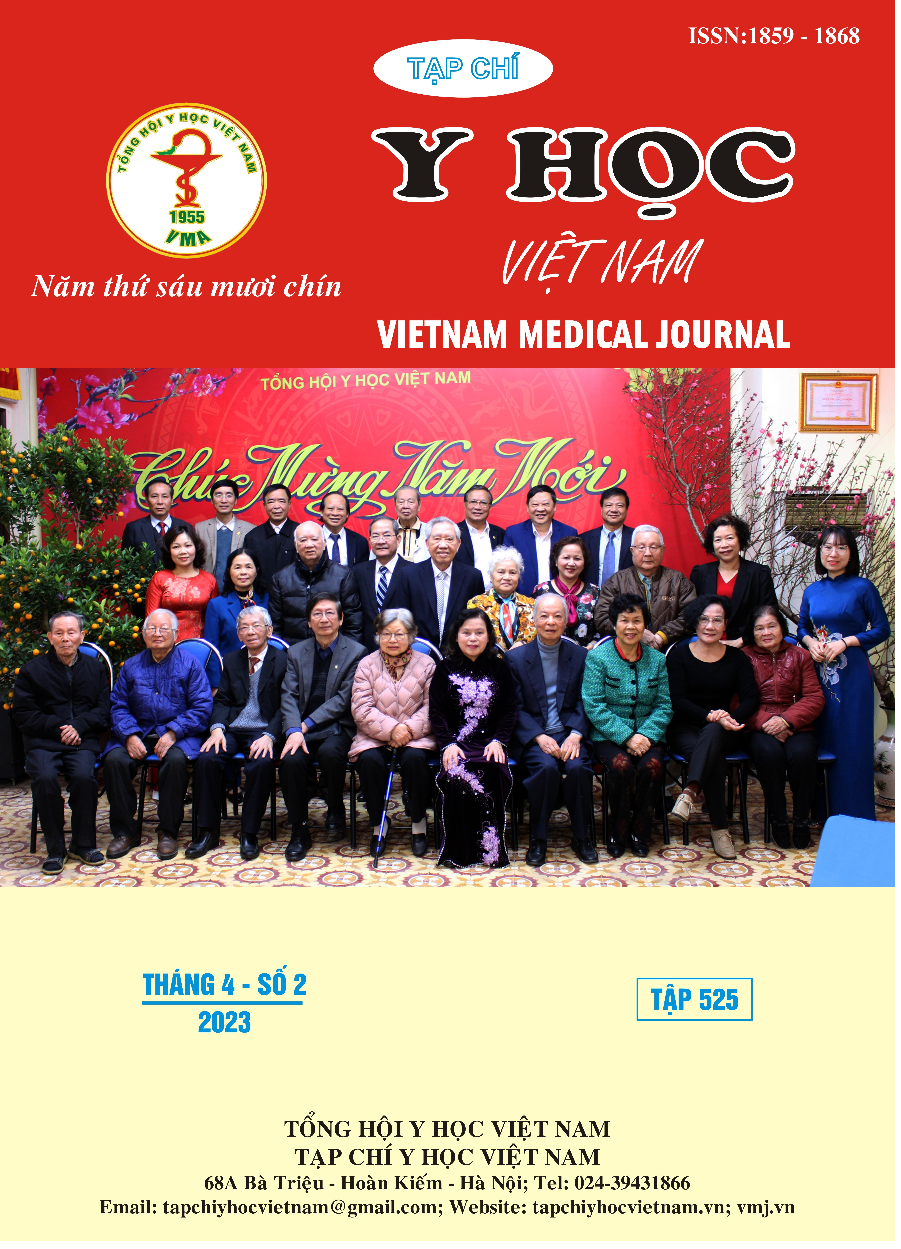PEDICLE FIXATION COMBINE DECOMPRESSION USING O.ARM SYSTEM IN MULTILEVEL DEGENERATIVE CERVICAL SPINAL STENOSIS PATIENT
Main Article Content
Abstract
Objectuves: Evaluate the results of surgical treatment for multilevel degenerative cervical spinal stenosis using pedicle screw fixation and decompression. Material and methods: A cross-sectional retrospective study was conducted on 31 patients diagnosed with degenerative multilevel cervical stenosis treated with cervical pedicle screw fixation and decompression. Results: The average age was 63,26 ± 9,63 years old. The proportion of men (74.2%) was nearly 3 times as many as the number of women (24.8%). Mean hospitalized duration was 12.09 ± 3.664 days. VAS, JOA, and NDI at the time of postoperative and after 12-month follow-up were improved significantly, compared to the figures for preoperative time. 95,71% screws classified as grade 0 by Neo classification. Conclusion: This study indicated the good outcomes of this technique in treatment of patients with multilevel degenerative cervical spinal stenosis. The intraoperative assissted O-arm system increases the accuracy of pedicle screw technique in addition with reducing the operative time.
Article Details
Keywords
Multilevel cervical stenosis; Pedicle screw fixation; O.arm system
References
2. Davies, B.M., Degenerative cervical myelopathy. The BMJ, 2018. 5: p. 1 - 4.
3. Đức, T.M., Kết quả phẫu thuật cố định cột sống cổ bằng vít qua cuống phối hợp mở cung sau giải ép trong điều trị bệnh lý hẹp ống sống cổ đa tầng do thoái hóa, in Bệnh viện Bạch Mai. 2019, Trường Đại Học Y Hà Nội.
4. Christopher D. Witiw MD, Five things to know about Degenerative cervical myelopathy. CMAJ, 2016. 189(3): p. 1 - 4
5. Sơn, P.Q., Nghiên cứu điều trị bệnh lý hẹp ống sống cổ bằng phương pháp tạo hình bản sống kết hợp ghép san hô. 2015, Đại học Y dược Thành Phố Hồ Chí Minh.
6. al., M.N.e., The Clinical Risk of Vertebral Artery Injury From Cervical Pedicle Screws Inserted in Degenerative Vertebrae. SPINE, 2005. 30(24): p. 2800 - 2805.
7. Nakashima H, Y., Complications of cervical pedicle screw fixation for nontraumatic lesions: a multicenter study of 84 patients. J Neurosurgery Spine, 2012. 16(3): p. 238–247.
8. al, M.R.e., Cervical Pedicle Screws: Conventional Versus Computer-Assisted Placement of Cannulated Screws. SPINE 2005. 30(20): p. 2280–2287.
9. Smith, J.D., Screw Placement Accuracy and Outcomes Following O-Arm-Navigated Atlantoaxial Fusion: A Feasibility Study. Global Spine J, 2016. 6(4): p. 344 - 349.
10. Masashi Uehara, J.T., Cervical Pedicle Screw Fixation Combined with Laminoplasty for Cervical Spondylotic Myelopathy with Instability. Asian Spine Journal, 2012. 6(4): p. 241 - 248


